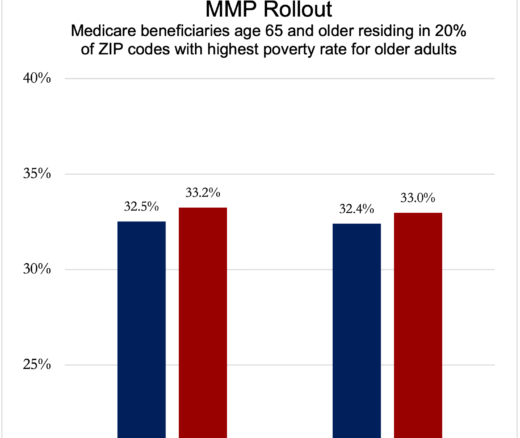
Acupuncture Could Fix America’s Chronic Pain Crisis–So Why Can’t Patients Get It?
A Proven, Low-Risk Treatment Is Backed by Major Studies and Patient Demand, Yet Medicare and Insurers Still Make It Hard To Use
Blog Post

The Supreme Court’s 2022 Dobbs decision has dramatically altered abortion access in the U.S. According to LDI Fellows Scott Lorch, Abigail Wilpers and Diana Montoya-Williams the ruling is also already causing higher costs for the treatment of critically ill children, and states with stricter laws have essentially eliminated abortion as an option for pregnancies involving genetic anomalies.
The team described five changes that flow from the decision in a recent piece in Pediatric Research.
About 3% of all pregnancies are affected by a congenital anomaly. For some conditions, such as trisomy 13 and anencephaly, the risk of pregnancy loss or infant death exceeds 50%. Studies indicate that up to 70% of pregnancies in which a fetus is affected by a life-limiting anomaly are terminated when the option is available. The median gestational age to detect chromosomal abnormality is 14 weeks, and 21 weeks for structural congenital anomalies. When states ban abortion or restrict them to before cardiac activity begins (usually around 6 weeks of gestation), this effectively eliminates termination as an option for these families. In Texas in the nine months after new restrictions were enacted, there were an estimated 10,000 additional births and a 12% increase in infant deaths compared to a set of control states.
For some conditions, maternal-fetal surgery can reduce the chance of death or mitigate fetal condition complications. The legal ambiguity of many states’ new abortion restrictions means that these fetal interventions could be classified as “abortions” due to the risk of fetal death during surgery. As a result, some clinicians have hesitated to perform these time-sensitive procedures, and families have been forced to travel for care.
Infants with life-threatening congenital anomalies often require long neonatal intensive care unit (NICU) stays. Medicaid will have to pay for many of these new NICU and critical care stays, as well as palliative care programs to assist in the medical management, psychosocial support, and bereavement care of infants whose lives are expected to be brief.
Hospitals across the country have been eliminating labor and birth services for decades, but the trend will likely be accelerated by Dobbs. Following the decision, the percentage of residency training spots filled in obstetrics and gynecology fell by 5.2%; the decline occurred in all states, but it was twice as high in those jurisdictions with abortion bans. A shortage of obstetric providers will contribute to delayed identification of fetal anomalies and delays in treatment of common maternal conditions during pregnancy (e.g., hypertension, diabetes) that are linked to risk of prematurity.
All of these changes will affect the ability of primary care pediatricians to care for patients in the months and years after discharge from the NICU. Children with congenital anomalies and developmental issues often need resources via Early Intervention programs or school-based disability accommodations. Such programs, which are already at capacity, may face increased demand and strain.
The article “The Dobbs Decision and Pediatric Healthcare: Preparing for Unintended Consequences” authored by Scott Lorch, Abby Wilpers, and Diana Montoya-Williams was published in Pediatric Research on November 23, 2024.


A Proven, Low-Risk Treatment Is Backed by Major Studies and Patient Demand, Yet Medicare and Insurers Still Make It Hard To Use

Chart of the Day: Medicare-Medicaid Plans—Created to Streamline Care for Dually Eligible Individuals—Failed to Increase Medicaid Participation in High-Poverty Communities
Research Brief: Shorter Stays in Skilled Nursing Facilities and Less Home Health Didn’t Lead to Worse Outcomes, Pointing to Opportunities for Traditional Medicare

How Threatened Reproductive Rights Pushed More Pennsylvanians Toward Sterilization

Abortion Restrictions Can Backfire, Pushing Families to End Pregnancies

They Reduce Coverage, Not Costs, History Shows. Smarter Incentives Would Encourage the Private Sector